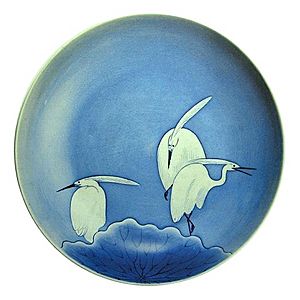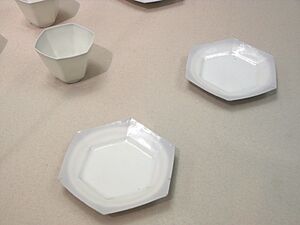Kyushu Ceramic Museum facts for kids
The Kyushu Ceramics Museum is a special museum in Arita town, Saga Prefecture, Japan. It's one of many museums in Japan supported by a prefecture, which is like a state or region.
This museum was built to help people learn about the amazing history of ceramics and pottery in Kyūshū, which is the southern part of Japan. It also helps to develop this art form. You can see many valuable and beautiful pieces here.
For example, there's the famous Kanbara Collection. This collection has old Imari porcelain from Europe, dating back to the 1600s and 1700s. There's also the Shibata Collection, which shows Arita pottery made between 1603 and 1867.
Contents
What You Can See at the Museum
The Kyushu Ceramics Museum has several important collections. Each one shows a different part of the history and art of Japanese ceramics.
Famous Collections
- Shibata Collection: This collection focuses on Arita pottery. Arita is a town famous for its porcelain. This collection shows how Arita pottery changed over many years, from the early 1600s to the late 1800s.
- Kanbara Collection: This collection is special because it features old Imari porcelain that was sent to Europe centuries ago. It shows how Japanese ceramics became popular around the world.
Other Important Collections
- Old Ceramics of Kyushu: This part of the museum displays very old pottery and ceramics from all over the Kyushu region. It helps you understand the long history of pottery making in this area.
- Hakuu Collection: This collection includes various types of ceramics.
- Takatori Collection: This collection focuses on Takatori ware, another type of traditional Japanese pottery.
- Aoki Ryuzan Works Collection: This section features works by Aoki Ryuzan, a famous ceramic artist.
- Nakazato Hoan Works Collection: Here you can see pieces made by Nakazato Hoan, another important artist in the world of ceramics.
Learn More About Ceramics
- Ceramics museum
- Fukuoka Oriental Ceramics Museum
- Prefectural museum
Where to Find the Museum




